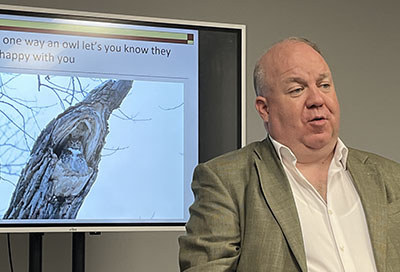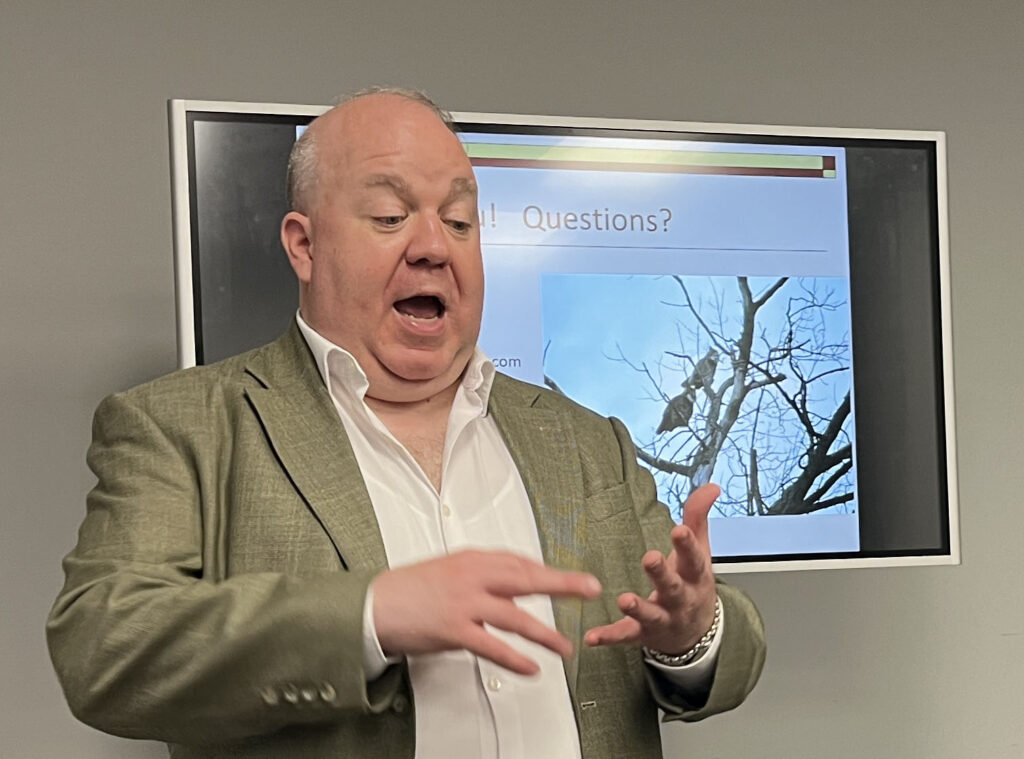Mark Glenshaw gave a fascinating talk on “How to Find Owls in your Neighborhood,” at the Museum Learning Center recently, sponsored by CCC Cabral Collision Center.
Owls often roost in dense evergreens. They’ll also perch close to the trunk in other kinds of trees, where they’re easier to spot once autumn leaves fall. Some species roost inside tree cavities, and you may be able to spot them looking out of the holes on warm days. While owls are largely active around dusk and at night, it’s much easier (and safer) to look for them by light of day. Winter is also the best season to scout. Probably the best way to zero in on where to look is to listen for them with their distinctive calls. These were just a few of the tips he presented to the audience.

Glenshaw is an award-winning naturalist. Since December 2005, he has closely observed and documented the lives of Great Horned Owls in Forest Park. He shares his work on his blog, “Forest Park Owls,” as well as on Instagram, Twitter, YouTube and Facebook.

Glenshaw does extensive outreach work with the owls. He leads dozens of tours balled owl prowls in Forest Park each year. He also gives scores of talks across Missouri, Illinois and beyond to a wide range of organizations. He was awarded the Citizen Scientist Award by the Academy of Science -St. Louis in 2006. Mark is a Certified Interpretive guide, a certified Missouri Master Naturalist and a volunteer for Forest Park Forever.
Ste. Gen Cable TV records all of the museum’s speaker presentations and Glenshaw’s presentation will be available soon.
